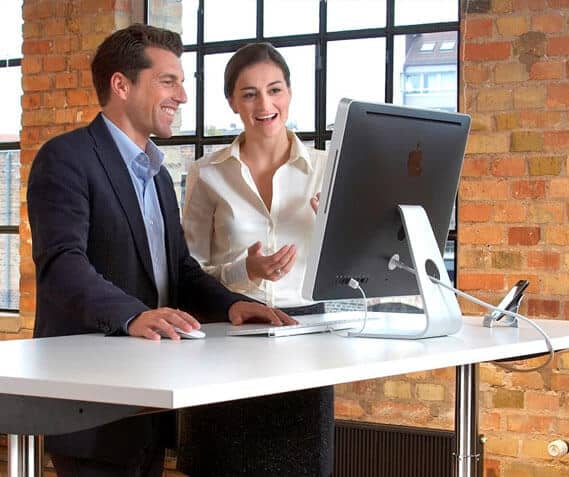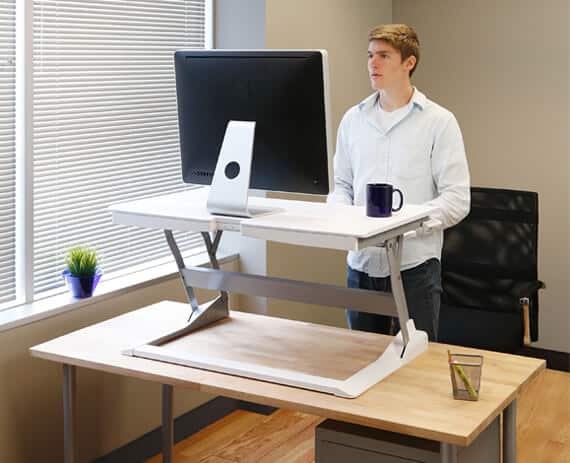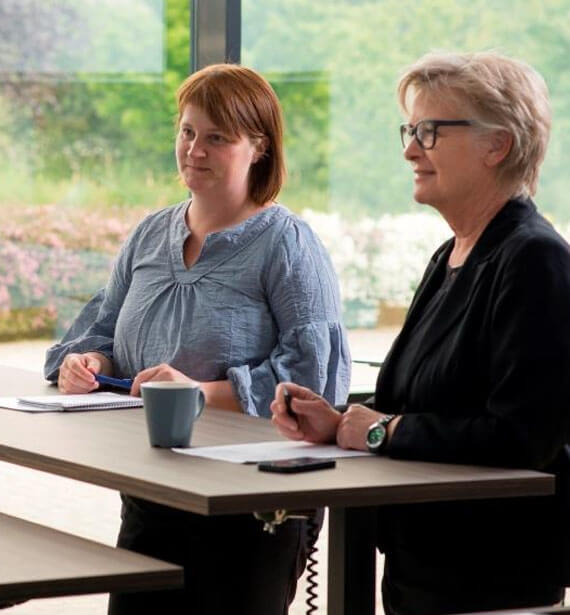Ergonomic Standing Desk
Improve workplace ergonomics – and as a result, the health, productivity, and safety of your staff – with an Ergonomic Desk
What is office ergonomics?
Office ergonomics is an umbrella term that refers to the design and implementation of workplaces that prioritise safety, comfort, and health.
It covers every single factor that could impact (either negatively or positively) an employee’s ability to comfortably and safely work in their office environment.
Office ergonomics includes:
- Furniture such as standing desks, monitor arms, and office chairs
- Lighting including natural light, light fixtures, and brightness and contrast from computer screens
- Noise pollution like equipment, loud music, nearby construction, and other distracting sounds
Poor workplace ergonomics can lead to:
- Injury
- Illness
- Fatigue
- Stress
- Unproductivity


Who uses ergonomic desks?
Ergonomic height adjustable desks are used by people of all ages across the country, throughout all types of office, corporate, and government settings.
From large corporations with dozens of employees to small businesses and even in schools, Australians are recognising the perils of prolonged sitting, and standing up for their health with an ergonomic desk.
Did you know that these famous people also used standing desks?
- Leonardo Da Vinci
- Ernest Hemingway
- Lewis Carroll
- Winston Churchill
Additionally, these global companies realise the benefits of standing desks:
- All Apple employees, under the direction of CEO Tim Cook, now have standing desks. “It took a little getting used to, but it’s great,” he said in 2015.
- Take a tour of the Facebook office, and you’ll see engineers using standing desks, allowing them to seamlessly switch between sitting and standing during their workday
- Those who work at Google can fill out an application for a standing desk. As employee Aaron Stein explains from their New York office, standing desks are available because “Google wants people to be comfortable when they work.”


Lower back pain
As you might expect, lower back pain is one of the most common injuries reported by office workers.
In fact, it’s estimated that up to an astonishing 90% of Australians will suffer from lower back pain at some point in their lives.
All of those hours slumped over a desk practicing poor posture has led to spinal, hip, and lower back injuries, and resulted in dull and throbbing pain.
Common workplace injuries and pain
Neck and shoulder pain
Take a look at how you’re sitting right now as you read this. Are you at a desk? Are your shoulders subconsciously bunched up?
Consider adding relaxation techniques to your workday’s schedule, making a conscious effort throughout the day to recognise you’re tensing your body.
Releasing this physical tension can help you release mental tension, too
Wrist pain
All that scrolling and clicking, holding your wrist at an awkward angle on your mouse, can lead to injuries such as carpal tunnel syndrome.
These types of injuries are caused by repetitive movement and can impact your tendons, muscles, ligaments, and bones.
Trips and falls
This is a pretty generic injury, and could include anything from debris on the floor to upturned carpets. But in this case, we refer specifically to computer PC towers, cables, cords, and wires that are not properly or safely secured.
Think about your own office environment: you’ve got cords for 1-2 computer screens, speakers, ethernet, telephone lines, and chargers. We bet the floor under your desk is a hot mess of cables!
Our desk cable trays easily and quickly hide computer cables under the desk in a secure wire tray.
Our CPU holder easily and quickly fastens the computer tower to the underside of the desktop removing it from the floor where it can become and trip hazard.
In addition to trips and falls, unsecured wires can also lead to computers and other electronics being accidentally dragged to the ground, resulting in damage.

